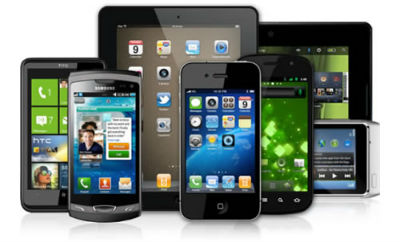Seven “Bring Your Own Device” Considerations
Are you thinking about installing a new audio visual system? Jonathan Blackwood, with Corporate Tech Decisions, explains seven aspects of “Bring Your Own Device” you need to think about before moving forward. He shares the following in his original article:
The benefits of bring your own device (BYOD) have been exhausted in media outlets and through company success stories. Employees want to be able to feel the comfort of using their own mobile devices to work on. They don’t want to take the time to learn a whole new system and they don’t want the hassle of switching devices depending on what they are carrying out. They just want to use one device for work and play, and have no problem using their own equipment in the office.
The benefit is clear on the employer’s side as well. Companies that allow BYOD allow the latest technology to continually walk through the door. Individuals will upgrade their mobile device far more often than a company will upgrade its enterprise solution. Employees that use their personal device for work as well as personal matter won’t separate the two the way others will. They will check their work e-mail, tweak presentations and peruse spreadsheets and documents outside of work hours because they are on their mobile devices anyway and it’s so easily accessible.
It’s clear that BYOD can be a worthwhile policy for a company to adopt. Before doing so you’ll want to think about some of the aspects of BYOD that must be addressed before adopting a policy. We’ve brought you seven considerations to think about for your BYOD policy.
- Mobile Devices – Employees are simply more comfortable using a personal device than something issued by the company. Individuals are more likely to upgrade phones consistently than companies are, so often the company benefits by getting the latest technology to work for them.
- Presentation – Allowing employees to connect their own devices to presentation technology is a good way to streamline a presentation. When an employee can connect through wireless distribution their device to a screen or projector, they are automatically familiar with the technology they are using to present.
- Collaboration – This takes things a step further in how companies can allow employee devices to interact with enterprise technology. Where presentations allow employees to show what’s on their screen, collaboration technology can allow employees to connect their personal devices to interactive technology.
- Audio Conferencing – Employees are more on the go than ever, and often must call in during meetings. Obviously dialing in from a cell phone is not a problem, but there is technology that will securely save the information for dial-ins so that employees can connect easily while on the go.
- Video Conferencing – There are obviously a number of basic video conferencing apps that are available for mobile devices, but there is the added possibility of roping in personal devices to your enterprise video conferencing system. Remote employees can join and participate or view video conferencing sessions straight from their mobile devices, on the go.
- Network Management – In order to support a growing number of mobile devices on your company’s network, you have to ensure that your network has the bandwidth to support all of these devices. Consider that for every laptop wirelessly or otherwise connected to your system, there is likely a personal smart phone that is also connected, as well as the potential for a personal tablet to connect as well. So there is the potential for 3 connected devices for every employee in the building.
- Network Security -With all of these new devices on your network there is more of a threat than ever to the network’s security. Between viruses, malware and tainted applications that any given employee may carry on their phone, it’s very possible for an intruder to infiltrate a personal device and hide away until that device is connected to the network.
Blackwood concludes his article with a photo slide-show detailing each of the previously mentioned considerations. It’s well worth your time!
Give me a call for assistance in any of these areas!



